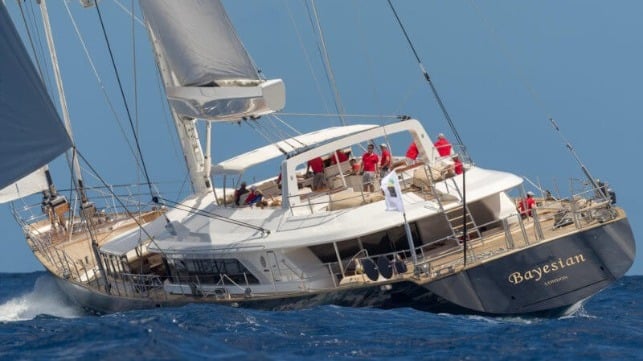Salvors Raise First Component of Lost Superyacht Bayesian

Salvors have raised the first major component of the lost superyacht Bayesian, which sank in a severe storm off the coast of Sicily last August. Seven people died in the tragedy, including the owner.
The boom is just one piece of a much larger salvage project. The team plans to recover the rest of the vessel's rigging, then parbuckle the wreck and raise it out of the water. The objective is to uncover new evidence to support two parallel investigations into the cause of the sinking. Raising the yacht will also address the risk of pollution from remaining fuel in its tanks.
A salvage project of this size and complexity is not without risks. On May 9, Dutch commercial diver Rob Huijben was killed while attempting to remove Bayesian's boom with a cutting torch. The cause of the fatality is under investigation.
Bayesian (ex name Salute) was a 180-foot aluminum-hulled sailing yacht built in 2008. Her sinking made headlines around the world, both for the unusual nature of the casualty and the high profile of the owner, British tech tycoon Mike Lynch. The ultra-modern megayacht departed Italy on August 14, 2024 with a prominent guest list, including Lynch. The vessel went down five days later in a sudden squall while anchored off Sicily, killing Lynch, his teenage daughter, the chairman of Morgan Stanley International, Lynch’s defense lawyer, and three others. Huijben's death earlier this month brings the total fatality count to eight.
A criminal investigation focused on the actions of the crew is currently under way, led by local Italian prosecutors. A separate technical inquiry by the UK Marine Accident Investigation Branch - representing Bayesian's flag state - recently released its initial report. Based on Bayesian's design and her configuration at the time of the casualty, MAIB concluded that the vessel would have been vulnerable to capsizing when exposed to wind gusts of as little as 63 knots on the beam. On the night of the accident, the vessel's mast was bare, its retractable keel was raised, and it had just 10 percent stores on board - a combination not covered by in the vessel's stability book.
